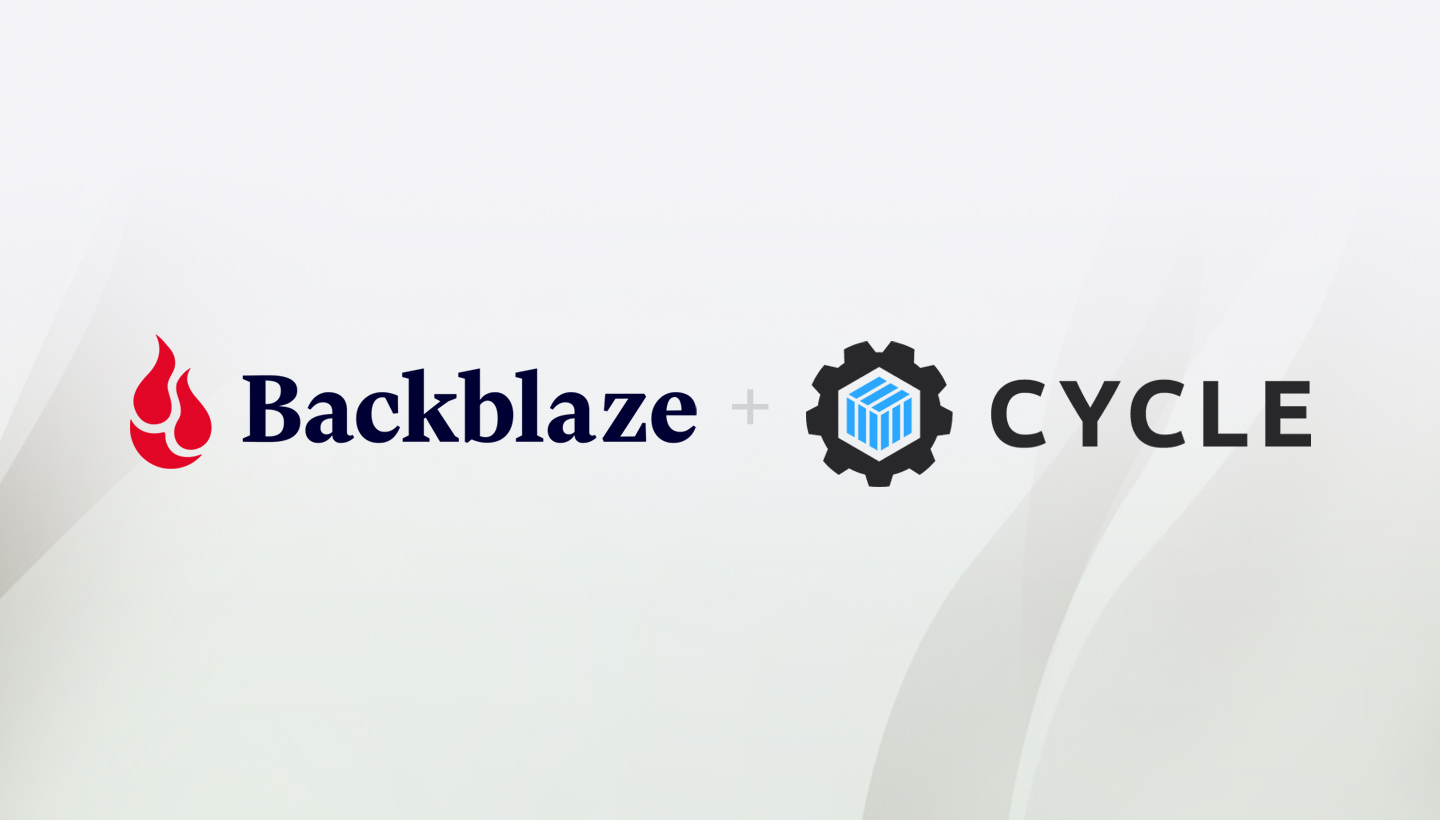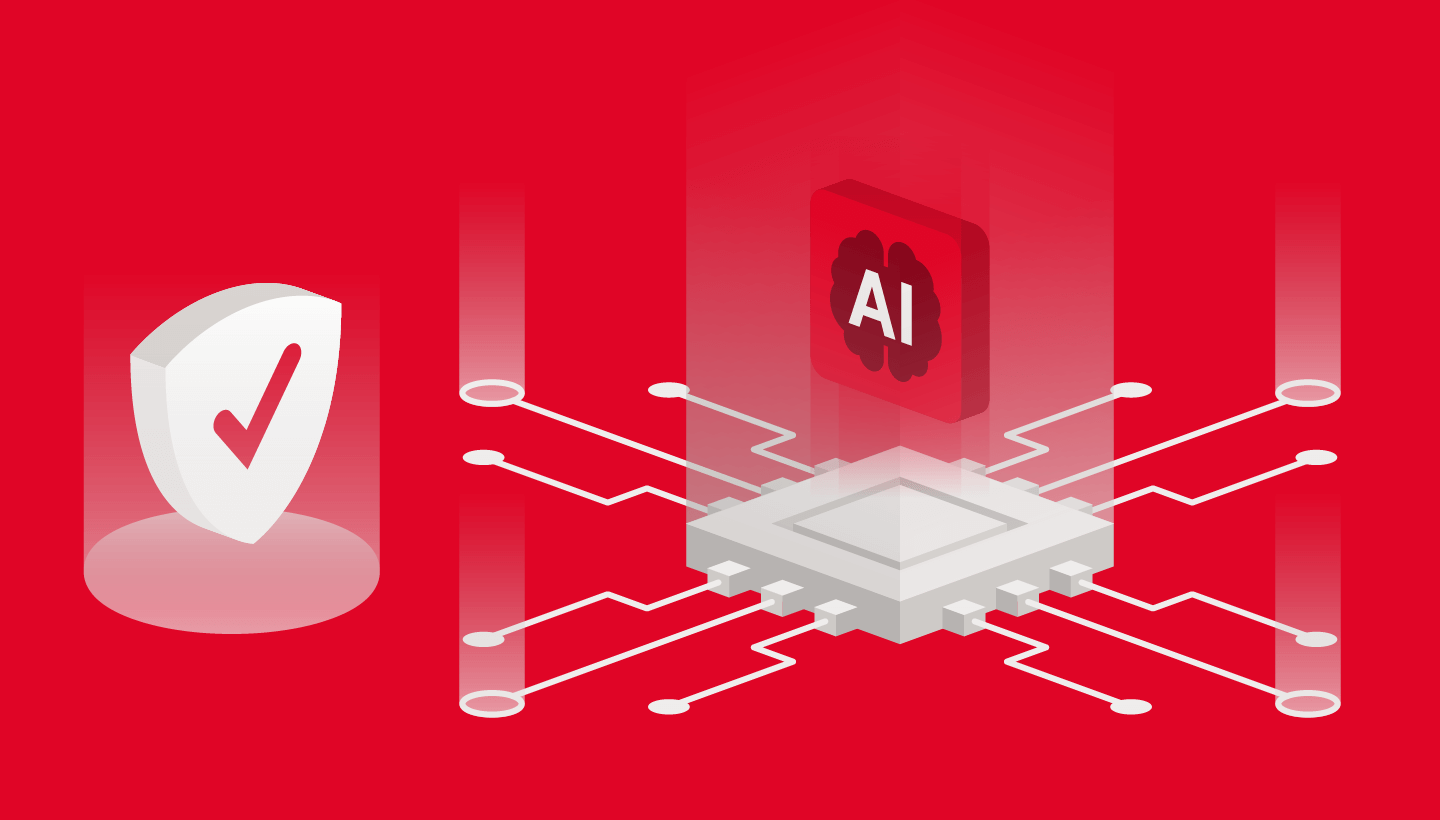
Containers have changed the way development teams build, deploy, and scale their applications. Unfortunately, the adoption of containers often brings with it ever-growing complexity and fragility that leads to developers spending more time managing their deployment rather than developing applications.
Today’s announcement offers developers a path to easier container orchestration. The Cycle and Backblaze B2 Cloud Storage integration enables companies that utilize containers to seamlessly automate and control stateful data across multiple providers—all from one dashboard.
This partnership empowers developers to:
- Easily deploy containers without dealing with complex solutions like Kubernetes.
- Unify their application management, including automating or scheduling backups via an API-connected portal.
- Choose the microservices and technologies they need without compromising on functionality.
Getting started with Cycle and Backblaze is simple:
- Create a Cycle account.
- Sign up for B2 Cloud Storage and create a bucket and Application Key.
- Associate your Backblaze Application Key with your Cycle hub via the Integrations menu.
- Utilize the backup settings within a container config.
For more in-depth information on the integration, check out the documentation.
We recently sat down with Jake Warner, Co-founder and CEO of Cycle, to dig a little deeper into the major cloud orchestration challenges today’s developers face. You can find Jake’s responses below, or you can check out a conversation between Jake and Elton Carneiro, Backblaze Director of Partnerships, on Jake’s podcast.
A Q&A With Cycle
Q: Give us a background on Cycle and what problem you are trying to solve? What is the problem with existing infrastructure like Kubernetes and/or similar?
A: We believe that cloud orchestration, and more specifically, container orchestration, is broken. Instead of focusing on the most common use cases, too many companies within this space end up chasing a never-ending list of edge cases and features. This lack of focus yields overly complex, messy, and fragile deployments that cause more stress than peace-of-mind.
Cycle takes a bold approach on container orchestration: focus on the 80%. Most companies don’t require, or need, a majority of the features and capabilities that come with platforms like Kubernetes. By staying hyper-focused on where we spend our time, and prioritizing quality over quantity of features, the Cycle platform has become an incredibly stable and powerful foundation for companies of all sizes.
The goal for Cycle is simple: Be the most developer-friendly container platform for businesses.
We believe that developers should be able to easily utilize containers on their own infrastructure without having to deal with the mundane tasks commonly involved with managing infrastructure and orchestration platforms. Cycle makes that a reality.
Q: What are the major challenges developers face today with container orchestration?
Complexity. Most deployments today require piecing together a wide variety of different tools and technologies for even the most basic deployments. Instead of adopting solutions that empower development teams without increasing bloat, too many organizations are chasing hype and increasing their ever-growing pile of technical debt.
Additionally, most of today’s platforms require constant hand-holding. While there are many tools that help reduce the amount of time to get a first deployment online, we see a major drop-off when it comes to “day two operations.” What happens when there’s a new update, or security patch? How often are these updates released? How many developers/DevOps personnel are needed to apply these updates? How much downtime should be expected?
With Cycle, we reduce complexity by providing a single turnkey solution for developers—no extra tools required. Additionally, our platform is built around the idea that everything should be capable of automatically updating. On average, we deploy platform updates to our customer infrastructure once every 10-14 days.
Q: Before announcing our integration, had you implemented Backblaze internally? Could you expand on that?
Absolutely! In the early days of Cycle, we made the decision to standardize and flatten all container images into raw OCI images. This was our way of hedging against different technologies going through hype waves. At the time, Docker was the “top dog” in the container space but there was also CoreOS and a number of others.
In an effort to control as much of the vertical stack as possible, we decided that, beyond flattening images, we should also store the resulting images ourselves. This way, if Docker Hub or another container registry unexpectedly changed their APIs or pricing, our platform and users would be insulated from those changes. As you can see, we put a lot of thought into limiting external variables.
Given the above, we knew that having an infinitely scalable storage solution was critical for the platform. After testing a number of providers, Backblaze B2 was the perfect fit for our needs.
Fast-forward to today, where all base images are stored on Backblaze.
Q: As alluded to above, you’re currently building a customer-facing integration. What’s the new feature? Have customers been asking for this?
We’re excited to announce that Cycle now supports automatic backups for stateful containers. A number of customers have been requesting this feature for a while and we’re thrilled to finally release it.
At Cycle, data ownership is very important to us—our platform was built specifically to empower developers while ensuring they, and their employers, still retain full ownership and control of their data. This automated backups feature is no different. By associating a Backblaze B2 API Key with Cycle, organizations can maintain ownership of their backups.
Q: What sparked the decision to partner and integrate with Backblaze specifically?
While there are a number of reasons this partnership makes a ton of sense, narrowing it down to a top three would be:
Performance: As we were testing different Object Storage providers, Backblaze B2 routinely was one of the most reliable while also offering solid upload and download speeds. We also liked that Backblaze B2 wasn’t overly bloated with features—it had exactly what we needed.
Cost: As Cycle continues to grow, and our storage needs increase, it’s incredibly important to keep costs in check. Beyond predictable and transparent pricing, the base cost per terabyte of data is impressive.
Team: Working with the Backblaze team has been incredible. From our early conversations with Nilay, Backblaze’s VP of Sales, to the expanded conversations with much of the Backblaze team today, everyone has been super eager to help.
Q: Backblaze and Cycle share a similar vision in making life easier for developers. It goes beyond just dollars saved, though that is a bonus, but what is it about “simple” that is so important? Infrastructure of the future?
Good question! There are a number of different ways to answer this, but for the sake of not turning this into an essay, let’s focus purely on what we, the Cycle team, refer to as “think long term.”
Anyone can make a process complex, but it takes a truly focused effort to keep things simple. Rules and guidelines are needed. You need to be able to say “No” to certain feature requests and customer demands. To be able to provide a polished and clean experience, you have to be purposeful in what you’re building. Far too often, companies will chase short term wins while sacrificing long-term gains, but true innovation takes time. In a world where most tech companies are built off venture capital, long-term gambles and innovations are deprioritized.
From the way both Cycle and Backblaze have been funded, to a number of other aspects, we’ve both positioned our companies to take those long term risks and focus on simplifying otherwise complex processes. It’s part of our culture, it’s who we are as teams and organizations.
As we talk about developers, we see a common pattern. Developers always love testing new technologies, they enjoy getting into the weeds and tweaking all of the variables. But, as time goes on, developers shift away from “I want to control every variable” into more of a “I just want something that works and gets out of the way.” This is where Cycle and Backblaze both excel.
Q: What can we look forward to as this partnership matures? Anything exciting on the horizon for Cycle that you’d like to share?
We’re really looking forward to expanding our partnership with Backblaze as the Cycle platform continues to grow. Combining powerful container orchestration with a seamless object storage solution can empower developers to more easily build the next generation of products and services.
While we now host our base container images and customer backups on Backblaze, this is still just the start. We have a number of really exciting features launching in 2022 that’ll further strengthen the partnership between our companies and the value we can provide to developers around the world.




